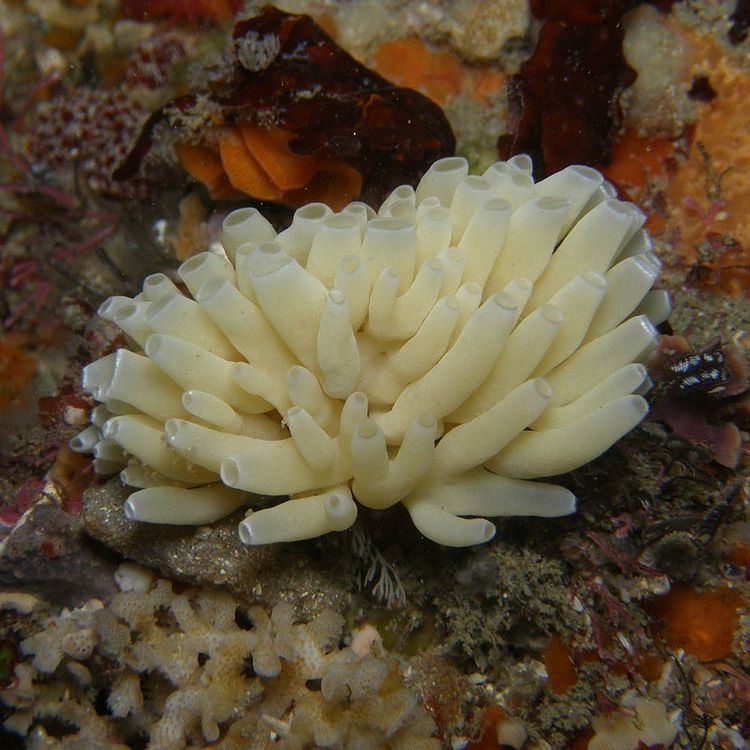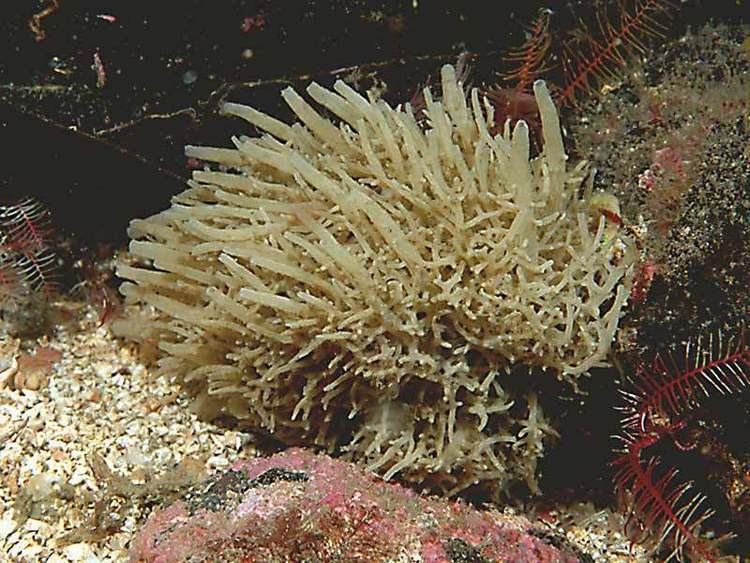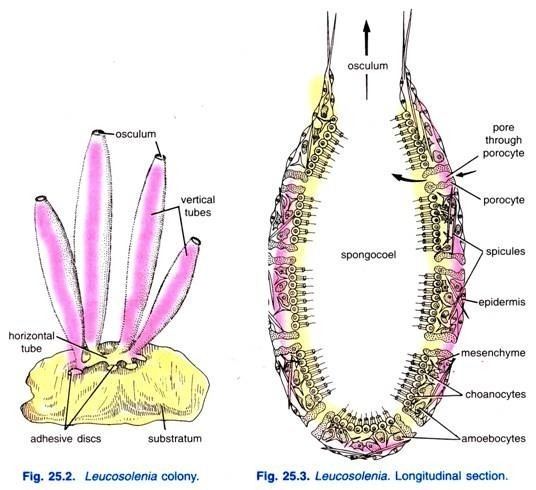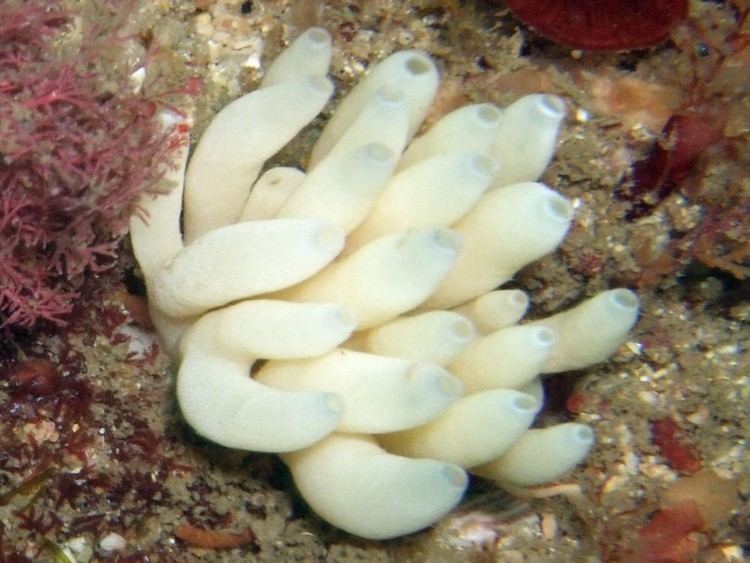Scientific name Leucosolenia | Rank Genus Subclass Calcaronea | |
 | ||
Similar Sponge, Calcareous sponge, Sycon ciliatum, Sycon, Grantia | ||
Biology Animation - Leucosolenia Physiology
Leucosolenia is a genus of calcareous sponges belonging to the family Leucosoleniidae. Species of this genus usually appear as groups of curved vases, up to 2 cm long, each ending in an osculum. The overall shape is sometimes likened to a tiny bunch of bananas. They are most often observed in tide pools, clustered around the base of seaweeds or on rocks, and occur in a variety of colours, usually rather pale. Its canal system is of asconoic type.
Characteristics of Leucosolenia sp.

1– It has no true tissues
2– Radial symmetry
3– It has single body cavity
4– Sac-like bodies by many pores.
Body consists of:

1– amoebocytes
2– choanocytes
3– spicules
4– spongocoel
5– osculum
Functions of choanocytes are to create a flow of water and for reproduction. Functions of amoebocytes are to pick up food vacuoles, carry oxygen, maintain the structure of sponge and acts as an excretory system.


